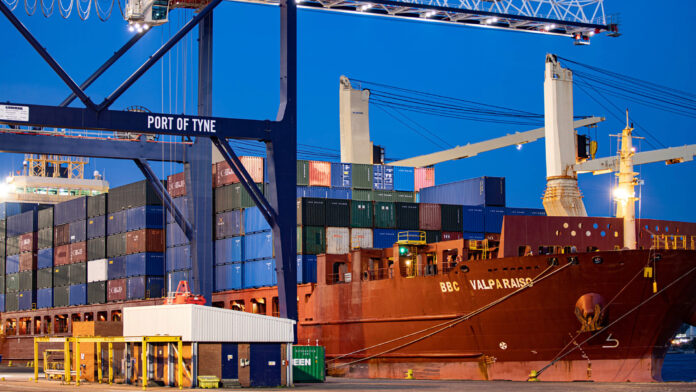The Port of Tyne views its private 5G network as a key enabler of a broad suite of smart port use cases
The Port of Tyne in the United Kingdom is among numerous similar facilities around the world that are investing in sweeping digital transformation initiatives with an eye on optimizing operations and increasing efficiencies. Speaking at the recent Industrial 5G Forum (available here on demand), Port of Tyne Head of Innovation and Technology Ian Blake described his strategy as based on three pillars: connectivity, data and people.
Specific to 5G, Blake said Port of Tyne’s transformation strategy, pegged to a 2050 time horizon, currently comprises a suite of 23 projects “and our last count, there’s about 20 of those projects that can be enhanced by the use of wireless connectivity around site.” He gave example such as quayside operations, worker health and safety, and net zero data collection and analysis. Hence connectivity as the first strategic pillar. “We need to connect everything to everything to gather the data; the data being the second pillar.”
Blake continued: “A port generates a huge amount of data and we don’t make the best use of that. We still run a lot of spreadsheets, a lot of manual paperwork. It’s very unstructured. It sits in systems that don’t speak to each other. So once we can identify where the key data is and look at the gaps, then we can start to make data led decisions.”
Onto the third pillar which is people. “We’re also looking to up skill our people, provide digital access to our operatives and security staff around site who previously wouldn’t have had any access. And that removes the need for duplicate paper copies. If we can provide them with a tablet or a digital device that they can [use to] access systems, then that helps with the optimization, the efficiencies throughout the port.”
The Port of Tyne self-funded work performed with BT and Ericsson to deploy a private 4G and Standalone 5G network across its site. Blake said the network includes a 27-meter mast in the middle of the site and nine other antennas supporting BT’s n77 spectrum in the 3.9 GHz band. In terms of ongoing network management, Blake said the port’s own IT staff serve as “first responder” if any issue arises, then there’s an “escalation route” to get BT involved.
The flywheel of smart port innovation
Blake was careful to note that Port of Tyne is “at the very start of our 5G journey,” and he said there wasn’t likely going to be a single killer 5G-enabled use cases that justifies the whole thing. Rather, he described a series of value-add use cases that once taken in total will amount of material digital transformation.
He said the current focus is on container scanning, so when containers are moved from a vessel to the port’s container compound they’re automatically (rather than manually) scanned. “This will read the container number, it will do a 360-degree check for damages, and it will also confirm that a seal is in place. And as the containers move through from quayside to yard into storage, there’ll be multiple checks just to make sure that the first check is correct.”
Next up, Blake said the port is exploring replacing old UHF radios with cellular-based push-to-talk. Also, he is exploring putting dash cams into port vehicles, and using cellular to stream footage into a digital twin. “And the idea of the system is that that’s going to do real-time interactive infrastructure checks. So it’s going to check the condition of the road—do we have flooding, do we have potential potholes, is the street furniture intact, is there anything damage, are we missing signage?”
All of that situational data will be fed into the port’s digital twin which can then communicate out to the civil engineering team who can effect changes. “So we’re hoping that we can prevent infrastructure maintenance by giving them proactive warnings around where potential issues may occur.” This paradigm, Blake said, will be further emboldened with an AI overlay. “The key thing for me is getting the data and being able to analyze it because, at the minute, we’re quite blind. So once we’ve got the data and we can run the correct algorithms over that using AI or machine learnings, then we start to make data-led decisions, which is where the real changes will start to happen.”

